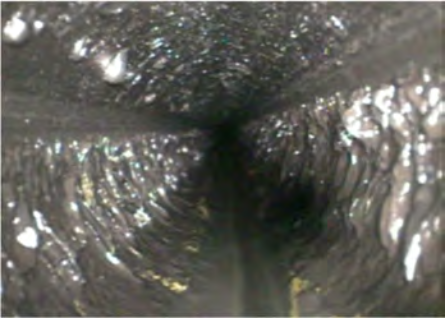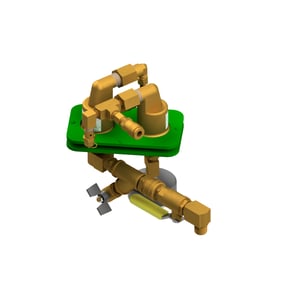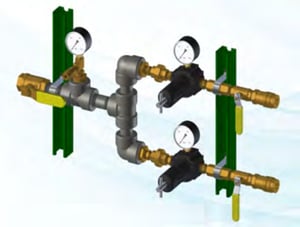History and Background
Specifics on subject building
- Multi Tenant Shopping Mall in California
- 1,400,000 sq. ft. of fire sprinkler system coverage
area - Eight (8) remote riser rooms containing a total of
fifty‐four (54) wet pipe risers serving the building - Average system volume 1,000 ‐ 1,500 gallons
Corrosion related leak history
- Long history of fire sprinkler leak repair and pipe
replacement - Partial replacement of sprinkler piping in select
tenant spaces - During 2014 the facility averaged one corrosion
related leak every two weeks which required repair - High risk liability due to fire sprinkler water leak
damage to tenant goods and interference with mall
operations
Fire sprinkler piping materials
- Schedule 10 black steel supply mains with schedule 7 black steel branch line piping
- Fire sprinkler systems installed in early 1990’s
The root cause for corrosion within the systems was oxygen attack of the black steel piping. The majority of leaks have occurred at the air/water interface in the branch line piping over the tenant spaces. The unique
characteristics of mall operations result in frequent tenant space modifications and build‐outs. The high frequency of system draining events causes frequent introduction of fresh air into the system piping, resulting in extremely high localized corrosion rates.






